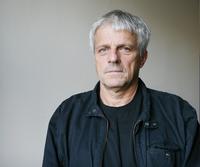Josef Žáček Surrogate
With the exhibition Anticorps (French for "Antidote"), the painter Josef Žáček drew attention to the fact that life is getting lost in the onslaught of serial events and empty phrases.
The new exhibition Surrogate develops the previous theme by focusing on the human body, which is becoming so alienated that we can hardly feel and perceive anything through it anymore. But the body is not a mere fleshly separate after its abandonment by the soul. Nor is it just a machine, as René Descartes introduced into thought and science. Rather, the body appears to us today as "a portion of Soul discernd by the five Senses, the chief inlets of Soul in this age."[1] William Blake wrote two centuries ago. What is this age of ours that despises the gates of the soul and diminishes the body?
According to contemporary philosopher and ecologist David Abram, our limitation in perceiving the world is precisely related to our progressive limitation in perceiving our own bodies. In the paintings of Josef Žáček this is painfully obvious. He does not depict the human body as a mysterious living, thinking and feeling organism; his canvases are more like disembodied images of ultrasound, X-rays; the decomposition of the body's matter. They do not show the unique inner world of the depicted, but only the "objective" one.
Under the influence of the shocking events of recent days, we are more receptive, perhaps even to the serious messages of Josef Žáček.
Pavlína Bartoňová, March 2022
[1] Blake William, The Marriage of Heaven and Hell


